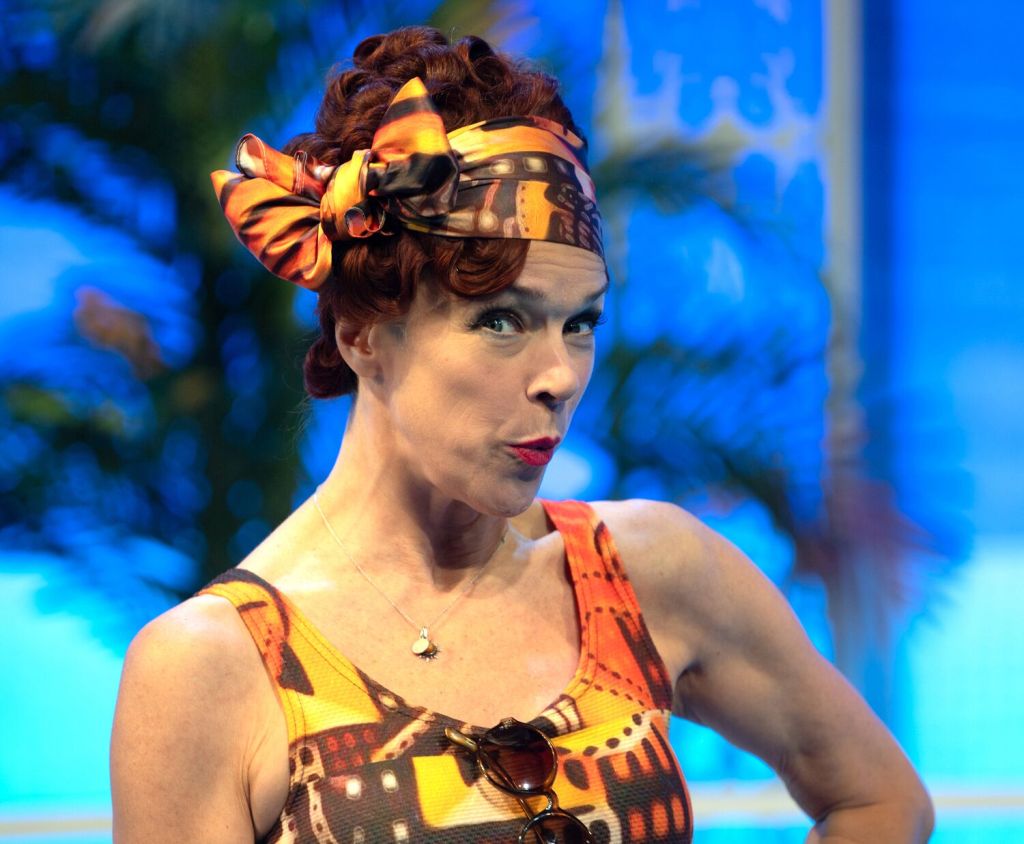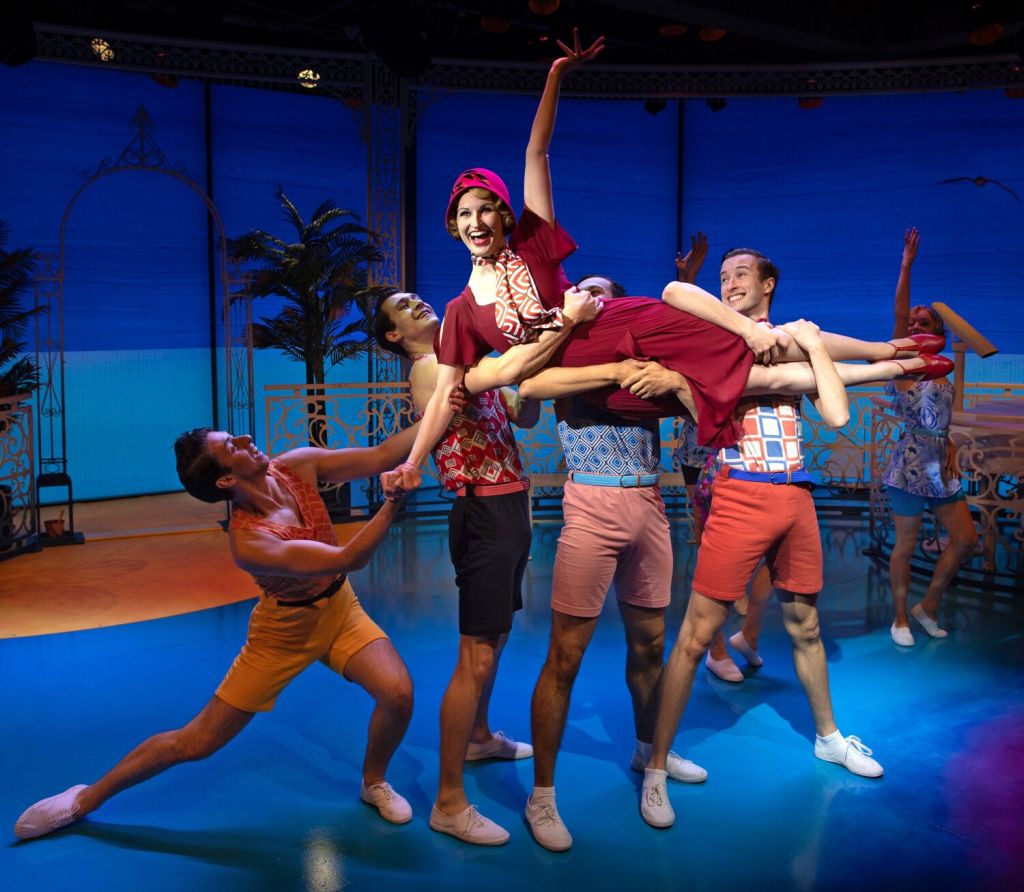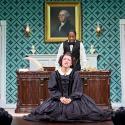There’s slight (White Christmas, to name but one) and then there’s The Boy Friend, a period musical so unabashedly vaporous that if you sneeze, it might blow away. All credit then to the Menier Chocolate Factory for anchoring Sandy Wilson’s onetime theatrical mainstay in a sustainedly nostalgic billow of song and dance to draw attention away from the fact that comparatively little of consequence happens across three acts. Matthew White's production would seem to be predicated on the assumption that nature abhors a vacuum, in which case, when in doubt, dance – and why not?
Indeed, I can’t remember the last time I saw a musical with two intervals, an authorial curiosity that on this occasion makes one realise how each (short) act seems padded more heavily than the one before. (My last exposure to this structure was doubtless the previous Boy Friend at Regent's Park over a decade ago.) Come the final half hour, and the inclusion of two lively dance numbers that are there merely to mark time, and one’s goodwill towards proceedings written in the 1950s but steeped in the featherweight style of the 1920s may be slightly tinged with a grin-and-bear-it smile. Even then, Menier veteran White (his Candide remains a highlight at this address) and choreographer, Bill Deamer (Follies), offer plenty to savour, particularly once the more seasoned members of a busy company take centre-stage.
 That comment intends no disrespect to the charming Amara Okereke, late of Oklahoma! at Chichester, who follows on in her role from Julie Andrews onstage and Twiggy in the (vastly different) Ken Russell film. Playing a “poor little rich girl” (their phrase, not mine) called Polly smitten with a messenger boy (Dylan Mason) who may not be what he seems, Okereke floats some lovely high notes. Even better, she never overdoes the winsomeness of material that could easily cloy, even if the bare bones of her dilemma – will Polly make it to the Carnival Ball – isn’t a million miles removed from Laurey’s predicament in Oklahoma! as regards attending the box social.
That comment intends no disrespect to the charming Amara Okereke, late of Oklahoma! at Chichester, who follows on in her role from Julie Andrews onstage and Twiggy in the (vastly different) Ken Russell film. Playing a “poor little rich girl” (their phrase, not mine) called Polly smitten with a messenger boy (Dylan Mason) who may not be what he seems, Okereke floats some lovely high notes. Even better, she never overdoes the winsomeness of material that could easily cloy, even if the bare bones of her dilemma – will Polly make it to the Carnival Ball – isn’t a million miles removed from Laurey’s predicament in Oklahoma! as regards attending the box social.
 Wilson’s story shows the English at their most hormonally active abroad, the on-again/off-again courtship of Polly and her newfound swain Tony paling next to the antics of their seniors. Those include, pre-eminently, an elaborately costumed and wigged Janie Dee (pictured above) in giddily faux-Gallic form as Mme Dubonnet, a Riviera doyenne as solicitous as she is imperious who reignites a passion with – guess who? – Percy (Robert Portal), Polly’s emotionally constipated dad. Giving the performance of the night is Adrian Edmondson as a henpecked aristo possessed of an ever-roving eye who turns the handling of an onstage ice cream into a nifty comic set piece. Edmondson doesn’t so much walk onstage as drift across it, as if lost in some blissful haze to which only he has access and forever oblivious to the censorious squawks of his wife (Issy van Randwyck). The two share arguably the strangest number in the show, "It's Never Too Late to Fall in Love", in which amorous subterfuge crosses the line from daft into idiotic. That said, Wilson's score can be seen to look forward as well as back: one has to wonder whether Stephen Sondheim was aware of "It's Nicer in Nice" when he penned the not dissimilar "Ah, Paree!" for Follies's resident Frenchwoman, Solange. (Wilson's equivalent is led here by a hard-driving Tiffany Graves, pictured above, as the feather duster-friendly Hortense.) The score, incidentally, is reprise-happy to a fault: rare is the number that doesn't build in its own encore, which in turn ramps up the pleasure taken in musical director Simon Beck's top-class orchestra.
Wilson’s story shows the English at their most hormonally active abroad, the on-again/off-again courtship of Polly and her newfound swain Tony paling next to the antics of their seniors. Those include, pre-eminently, an elaborately costumed and wigged Janie Dee (pictured above) in giddily faux-Gallic form as Mme Dubonnet, a Riviera doyenne as solicitous as she is imperious who reignites a passion with – guess who? – Percy (Robert Portal), Polly’s emotionally constipated dad. Giving the performance of the night is Adrian Edmondson as a henpecked aristo possessed of an ever-roving eye who turns the handling of an onstage ice cream into a nifty comic set piece. Edmondson doesn’t so much walk onstage as drift across it, as if lost in some blissful haze to which only he has access and forever oblivious to the censorious squawks of his wife (Issy van Randwyck). The two share arguably the strangest number in the show, "It's Never Too Late to Fall in Love", in which amorous subterfuge crosses the line from daft into idiotic. That said, Wilson's score can be seen to look forward as well as back: one has to wonder whether Stephen Sondheim was aware of "It's Nicer in Nice" when he penned the not dissimilar "Ah, Paree!" for Follies's resident Frenchwoman, Solange. (Wilson's equivalent is led here by a hard-driving Tiffany Graves, pictured above, as the feather duster-friendly Hortense.) The score, incidentally, is reprise-happy to a fault: rare is the number that doesn't build in its own encore, which in turn ramps up the pleasure taken in musical director Simon Beck's top-class orchestra.
That leaves the young ensemble to work tirelessly, kicking up their heels this way and that across yet another well-drilled dance routine from Deamer that by the third act seems to be filling in where the plot has simply stopped. (His male dance ensemble are far better dancers, it should be noted, than singers.) It's by that point that one's broad smile from the first act can be forgiven for morphing into a mere let's-get-on-with-it grin.
- Read more theatre reviews on theartsdesk
- The Boy Friend at Menier Chocolate Factory to March 7















Add comment